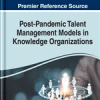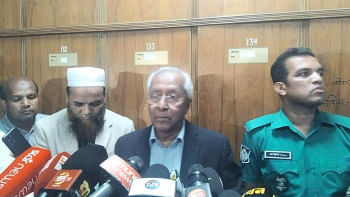Pre-empting the next pandemic

Recent disease outbreaks, like Ebola and Zika, have demonstrated the need to anticipate pandemics and contain them before they emerge. But the sheer diversity, resilience, and transmissibility of deadly diseases have also highlighted, in the starkest of terms, just how difficult containment and prevention can be.
One threat to our preparedness is our connectedness. It was thanks to easy international travel that in recent years the dengue, chikungunya, and Zika viruses were all able to hitch a ride from east to west, causing massive outbreaks in the Americas and Caribbean. Another threat is more mundane: failing to agree about money. Whatever the reason, the fact is that as long as humans fail to organise a collective and comprehensive defence, infectious diseases will continue to wreak havoc—with disastrous consequences.
Building an effective prevention and containment strategy—being bio-prepared—is the best way to reduce the threat of a global contagion. Preparedness requires coordination among agencies and funders to build networks that enable quick deployment of and access to vaccines, drugs, and protocols that limit a disease's transmission. Simply stated, preparing for the next pandemic means not only building global capacity, but also paying for it.
That's the idea, at least. The reality of bio-preparedness is far more complicated. For starters, the absence of dedicated funding is impeding implementation of long-term prevention strategies in many countries; a new World Bank report finds that only six countries, including the United States, have taken the threat seriously. Meanwhile, public health officials in many parts of the world struggle to respond to disease outbreaks, owing to a dearth of labs and clinics. And many funding agencies, including governments and NGOs, typically offer only one-year commitments, which rules out long-term planning.
For years, scientists, physicians, and civil-society actors have voiced concern over the lack of reliable, meaningful, and institutionalised investment in pandemic preparedness. These pleas have come, frustratingly, as military funding to thwart bio-attacks, consciously mounted by human actors, has remained robust. But while purposeful and nefarious infectious-disease outbreaks could do massive damage, they remain relatively unlikely. Naturally occurring outbreaks, by contrast, occur regularly and are far more costly, even if they lack the sensational "fear factor" of bioterrorism.
Not that long ago, those of us engaged in the prevention of infectious-disease outbreaks felt more secure about the availability of the resources required to prepare. But in many places, budgets are stagnating, or even declining. This is astonishingly short-sighted, given the relative costs of prevention versus response. For example, what would it have cost to build the clinical and laboratory infrastructure and provide the training needed to identify and prevent the recent Ebola outbreak in West Africa? Precise figures are elusive, but I have no doubt it would have been less than the billions of dollars spent on containment. Preparedness pays.
It is not only the lack of funding that is raising alarms; so are restrictions on how available funds can be used. It is not uncommon for a grant to be restricted to specific activities, leaving major gaps in a programme's capacity to meet its objectives. A funder may, for example, allow the renovation of an existing lab but not the construction of a new one; or funds may support the purchase of a diagnostic machine but not the training of those required to operate it. In many developing countries, communities do not even have the physical buildings in which to test, monitor, or store dangerous pathogens. Myopic funding that overlooks key elements of the big picture is money poorly spent.
Add to these challenges the difficulty of paying staff or ensuring reliable electricity and other essential services, and it becomes clear that preparing for disease outbreaks requires broad engagement with the international aid community. But at the moment, onerous spending rules and weak financial commitments are tying the hands of those working to prevent the next serious disease outbreak.
The number of obstacles faced by scientists and public health experts in the race to contain deadly infectious diseases is staggering. To overcome them, we need to redefine how we think about preparedness, moving from a reactive position to a more proactive approach. Money earmarked for preparedness must be allocated at levels sufficient to have the required impact. Limitations on how it can be spent should be loosened. Funding sources must be opened to allow for multi-year commitments. Health-care providers and first responders must receive proper training. And long-term solutions such as establishing and connecting bio-surveillance systems should be expanded and strengthened, to enable public-health professionals around the world to track and report human and animal diseases and plan defences together.
Public health is an essential element of global security. Failing to invest appropriately in prevention of infectious-disease outbreaks puts all of us at risk, whenever or wherever the next one occurs.
Stephen J. Thomas, an infectious diseases physician, is Professor of Medicine and Chief of the Division of Infectious Diseases at the State University of New York, Upstate Medical University.
Copyright: Project Syndicate, 2017.
www.project-syndicate.org
(Exclusive to The Daily Star.)










Comments